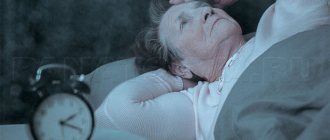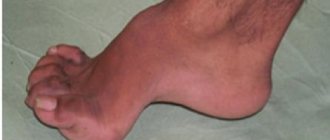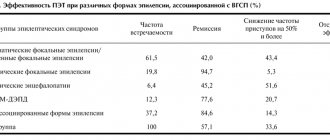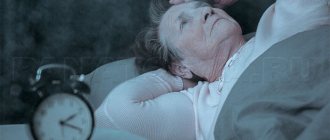Published: 10/01/2021 13:30:00 Updated: 10/01/2021
Epilepsy is a chronic neurological disease characterized by recurrent attacks with loss or confusion of consciousness associated with episodes of pathological electrical activity in a region of the gray matter of the brain.
An epileptic seizure is a temporary disturbance of consciousness, accompanied by motor, sensory, autonomic, and mental disorders.
The prevalence of epilepsy among the world's population is 10%; about 5 million new cases occur annually: 49 per 100,000 population in high-income countries and 139 per 100,000 population in countries with middle and low economic levels [3]. In total, epilepsy is diagnosed in 0.8% of adults and 1% of children [2].
Epilepsy in children is most common in the first year of life: 233 per 100,000 children under one year of age; among children from 1 to 15 years old, from 5 to 10 cases per 1000 children are registered [1].
The diagnosis of epilepsy can be made after the first attack if there is reason to assume a high risk of recurrence.
Causes of epilepsy
- Genetic predisposition.
- Injuries, including TBI.
- Hypoxia or trauma during childbirth, prematurity.
- OMNK.
- Neoplasms of the brain.
- Malaria, neurocysticercosis, meningitis, encephalitis.
- Asphyxia of various origins (obstruction by a foreign body, drowning, hanging).
- Alcoholism.
- Addiction.
Seizures are triggered by visual stimuli (flashing lights, flickering), music with an increased rhythm, intense mental activity, certain foods or movements, bodily sensations, reading, hot or cold water, sharp sounds, intoxication, fever (febrile convulsions).
However, in many cases a trigger is not required for an attack to occur. Epilepsy in adults, which begins at a relatively mature age, is associated with external causes: alcoholism, drug addiction, industrial intoxication, traumatic brain injury, neuroinfection.
Alcoholic epilepsy, strictly speaking, refers rather to epileptoform syndromes, since in true epilepsy seizures are not provoked, but occur spontaneously. Alcohol withdrawal syndrome, the initial period of alcoholic delirium or Korsakoff psychosis, and Wernicke encephalopathy lead to the development of seizures. Binge drinking increases the likelihood of alcoholic epilepsy, since anticonvulsants are not taken during this period, and withdrawal symptoms are more severe.
Mental illness
People suffering from epilepsy often have a history of mental pathologies. Neurological disease can be provoked by constant stress, depression, and emotional stress. Epileptologists often wonder whether mental disorders are predisposing factors for the development of epilepsy or are independent risk factors.
In 2009, a special study was conducted in which veterans of the control group and veterans with epilepsy, which was diagnosed for the first time, took part. As a result, researchers have proven that anxiety, depression, and alcohol abuse are common among newly diagnosed patients.
After this, scientists looked at risk factors such as head injury and stroke, dementia, brain tumors and proved that only psychosis is associated with epilepsy. There is no 100% guarantee that the tests are diagnostically accurate. Among elderly patients, there is a relationship between mental disorders and epilepsy, but they do not always become the main factors that provoke the development of the disease.
It is also known that the group of veterans did not include a representative population of elderly people. In the future, researchers will conduct studies that will prove or disprove a possible connection between mental disorders and epilepsy.
Symptoms and types of epilepsy
First of all, the clinical picture of epilepsy is associated with convulsive or non-convulsive seizures.
Depending on the location of the focus of pathological excitation, attacks can be focal (focus in one hemisphere) or generalized (spread of pathological excitation throughout several structures of the brain). Convulsive attacks of epilepsy can be partial (convulsive twitching of a part of the body) or generalized (general convulsive attack). The latter are accompanied by urinary and sometimes fecal incontinence.
An epileptic attack may have an aura - well-known precursor sensations to the patient on the eve of the attack. These may be special sounds, smells, tastes, visual illusions or emotional changes. Sometimes the aura is difficult for the patient to describe, but he feels it well. Vegetative manifestations and loss of consciousness are possible, not accompanied by convulsions - such an attack is called absence seizure.
Focal epilepsy (also known as Jacksonian epilepsy) is characterized during a seizure by the repetition of monotonous movements of the fingers, hand or foot, facial grimaces, phonatory convulsions, that is, a cry, involuntary sounds against the background of switching off consciousness (motor Jacksonian epilepsy), paresthesia, turning the head or eyes, flashes light in the eyes, visual, olfactory or auditory hallucinations (sensory Jacksonian epilepsy).
Motor attacks - convulsions - can be:
- clonic (convulsions of large muscle groups, “epileptic arc”);
- tonic (contractions of small muscles, monotonous movements);
- tonic-clonic (freezing in one tense position, followed by muscle twitching);
- myoclonic (weak muscle twitching, tics);
- hypermotor automatisms (externally organized, repetitive movements);
- epileptic spasm (flexion and extension of a violent nature).
The mental equivalent of an epileptic seizure resembles the “amok” known in fiction.
Suddenly the patient falls into angry psychomotor agitation, his actions are outwardly ordered, but his consciousness is deeply darkened. During an attack, the patient may leave in an unknown direction, get lost, attack someone, and even kill. The attack ends on its own after a few minutes. The patient regains consciousness, breathing normalizes, and muscles relax. Excitement gives way to inhibition, sometimes the patient falls asleep.
First aid for epilepsy comes down to gently fixing the patient's head so that he does not harm himself during an attack. No objects should be inserted into the oral cavity, since convulsive clenching of the jaws with this object can knock out teeth. After the patient comes to his senses, it is advisable to create a calm environment for rest.
The most dangerous variant of an epileptic attack is status epilepticus. This is a life-threatening condition that requires emergency medical attention. Status epilepticus is a series of convulsive attacks during which the patient lacks consciousness and normal breathing. Absence seizures - non-convulsive seizures - can also develop into status epilepticus, called epileptic stupor. The patient freezes, immersed in himself, not reacting to external stimuli.
Epilepsy is often accompanied by personality changes: pedantry, rigidity, depressive episodes and anxiety, and the inability to separate the important from the unimportant.
Epilepsy in children has age-dependent forms:
- idiopathic focal epilepsies of infancy and childhood;
- benign familial neonatal seizures;
- myoclonic epilepsy of infancy;
- childhood or juvenile absence epilepsy;
- juvenile myoclonic epilepsy.
If epilepsy in children begins at an early age, encephalopathy (epileptic or developmental encephalopathy) often develops with behavioral, thinking and neurological disorders. The first is most likely in severe attacks that begin in childhood, the second is a genetically determined mental disorder of early age, including thinking defects and autism spectrum disorders (sociopathy, stereotypies, speech disorders).
Neurodegenerative disorders
The risk of developing epilepsy increases if the patient suffers from neurodegenerative pathologies, including Alzheimer's disease and others. Such disorders and other dementias occur in up to 20% of cases among older adults. According to studies, it has been proven that Alzheimer's disease has the greatest impact on the body. The risk of epilepsy increases if the disease was suffered at a young age. With this diagnosis, various types of seizures are possible, including myoclonic seizures.
Consequences of epilepsy
Epilepsy is a chronic disease that remains with the patient throughout his life.
The risk of premature death associated with injuries from falls, drowning, thermal injuries, and status epilepticus (a long series of attacks with breathing problems) increases. In addition to the clinical symptoms, a person faces the social and psychological consequences of epilepsy. It is a highly stigmatizing disease that reduces the quality and length of life. In some countries, epilepsy is grounds for dismissal or divorce. The vital activity of patients is reduced for fear of being injured during an attack. Epilepsy prevents you from occupying certain positions and driving vehicles.
First aid for seizures
Proper care for an epileptic seizure reduces the risk of complications and injuries. The person who happens to be next to the patient should catch him and prevent him from falling. You also need to do the following:
- Place a blanket, pillow or cushion of clothing under your head;
- Free your neck and chest from constricting objects and clothing (tie, shirt, scarf);
- Carefully turn the patient's head to the side to minimize the risk of inhalation or passive reflux of vomit or own saliva;
- Open your mouth and put a cloth or handkerchief in it to prevent the patient from biting his tongue;
- Do not forcefully open your mouth;
- If breathing stops for a long time, perform artificial ventilation from the mouth to the nose or mouth.
During an attack, the patient may experience involuntary urination or bowel movements. This manifestation of epilepsy should not cause fear in others. After an attack, patients usually experience drowsiness and severe weakness.
Diagnosis of epilepsy
The most accurate way to diagnose epilepsy is an electroencephalogram recorded over several hours (EEG monitoring, preferably accompanied by a video recording of the attack). Epilepsy requires studying the functions of the brain, excluding other causes of convulsive syndrome: an MRI or CT scan of the brain is prescribed. Additionally, laboratory diagnostics are used.
Tests for epilepsy
In the laboratory, the presence of chromosomal abnormalities can be determined using molecular screening.
Changes in the telomeres of some chromosomes are detected, leading to limited cognitive function. For the purpose of genetic diagnosis, the following is prescribed:
- molecular screening for microdeletions/microduplications (molecular copies of a chromosome region);
- gene diagnosis of Martin-Bell or Shereshevsky-Turner syndrome.
Laboratory methods are used to diagnose TORCH infections that contribute to the development of epileptic syndrome.
To correct anticonvulsant therapy, a number of laboratory tests of the content of medications are performed:
- Levetiracetam
- Carbamazepine
- Clonazepam
- Difenin
- Phenytoin
Treatment and prevention of epilepsy
Primary prevention of epilepsy comes down to avoiding its external causes: craniocerebral herbs, infections, poisoning, including alcohol or drugs, careful management during childbirth, avoiding hypoxia and birth trauma, timely reduction of body temperature to avoid febrile convulsions.
Correctly selected therapy in most cases reduces the frequency and severity of attacks if anticonvulsants are taken systematically and carefully. A prolonged convulsive attack can be stopped with injections, for example, diazepam, relanium. Continuous treatment is prescribed by a neurologist with drugs from the group of anticonvulsants: carbamazepine, topiramate, valproate. To increase treatment adherence, long-acting forms of drugs are used. The dose is controlled by the doctor depending on the patient's condition (start of treatment, fever, kidney disease). It is impossible to select and purchase them yourself without a prescription.
In cases of development of encephalopathies, mental equivalents of convulsive seizures and epileptic personality changes, therapy is supplemented by a psychiatrist. If conservative treatment does not help, neurosurgery is sometimes resorted to.
Tumors
Convulsive seizures can become a symptom that indicates the presence of a neoplasm among any age group. Seizures are typical for the formation of poorly differentiated primary tumors, and not for highly differentiated ones. Old people often suffer from meningiomas, gliomas and metastatic tumors, which can cause seizures.
Often, seizures indicate the development of metastasis. According to data obtained after the study, it became known that in 43% of cases, metastases were found in patients, the cause of which was the attacks. In general, malignancy is not detected until the onset of epileptic seizures.
Bibliography
- Mukhin, K.Yu. Definition and classification of epilepsy. Project classification of epileptic seizures 2021 / K.Yu. Mukhin - Text: immediate // Russian Journal of Child Neurology, 2021. - No. 12. - P. 8-19.
- Rudakova, I.G. Epilepsy. Fundamentals of diagnostics and therapy / I.G. Rudakova, S.V. Kotov, Yu.A. Belova - Text: direct // Almanac of Clinical Medicine, 2004.- P303-315.
- Epilepsy: WHO fact sheet: [Global website]. – Geneva, 2019 – URL: (access date: 09/26/2021). — Text: electronic.
Author:
Pugonina Tatyana Alekseevna, Therapist









